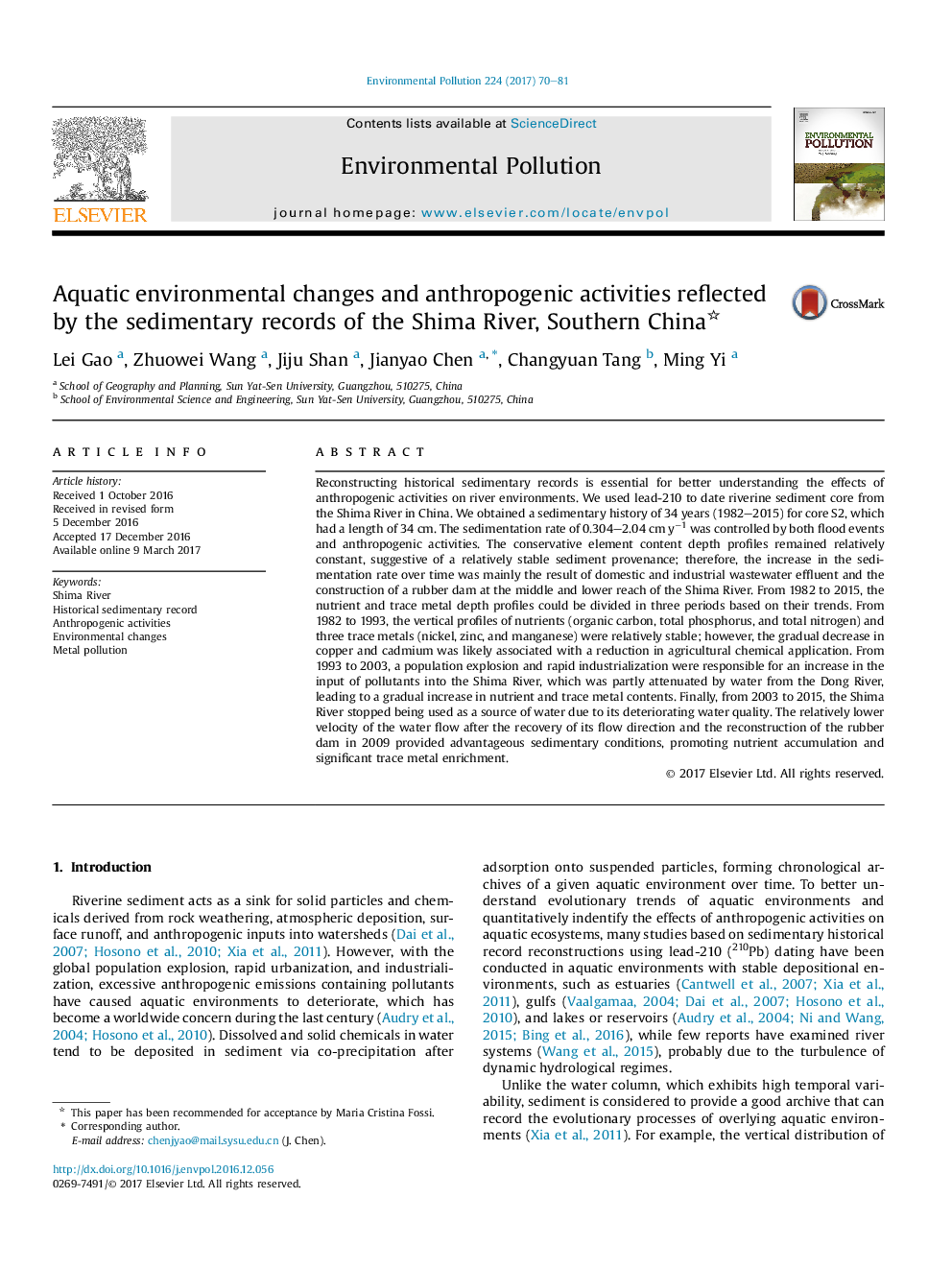| کد مقاله | کد نشریه | سال انتشار | مقاله انگلیسی | نسخه تمام متن |
|---|---|---|---|---|
| 5749364 | 1619149 | 2017 | 12 صفحه PDF | دانلود رایگان |
- 34-years record of sedimentation was reconstructed in an urbanizing watershed.
- Economic transition in the PRD areas was reflected by sedimentary history.
- Urbanization and industrialization were prevailing contamination sources.
- Significant enrichment of heavy metals was observed during the last two decades.
Reconstructing historical sedimentary records is essential for better understanding the effects of anthropogenic activities on river environments. We used lead-210 to date riverine sediment core from the Shima River in China. We obtained a sedimentary history of 34 years (1982-2015) for core S2, which had a length of 34 cm. The sedimentation rate of 0.304-2.04 cm yâ1 was controlled by both flood events and anthropogenic activities. The conservative element content depth profiles remained relatively constant, suggestive of a relatively stable sediment provenance; therefore, the increase in the sedimentation rate over time was mainly the result of domestic and industrial wastewater effluent and the construction of a rubber dam at the middle and lower reach of the Shima River. From 1982 to 2015, the nutrient and trace metal depth profiles could be divided in three periods based on their trends. From 1982 to 1993, the vertical profiles of nutrients (organic carbon, total phosphorus, and total nitrogen) and three trace metals (nickel, zinc, and manganese) were relatively stable; however, the gradual decrease in copper and cadmium was likely associated with a reduction in agricultural chemical application. From 1993 to 2003, a population explosion and rapid industrialization were responsible for an increase in the input of pollutants into the Shima River, which was partly attenuated by water from the Dong River, leading to a gradual increase in nutrient and trace metal contents. Finally, from 2003 to 2015, the Shima River stopped being used as a source of water due to its deteriorating water quality. The relatively lower velocity of the water flow after the recovery of its flow direction and the reconstruction of the rubber dam in 2009 provided advantageous sedimentary conditions, promoting nutrient accumulation and significant trace metal enrichment.
434
Journal: Environmental Pollution - Volume 224, May 2017, Pages 70-81
